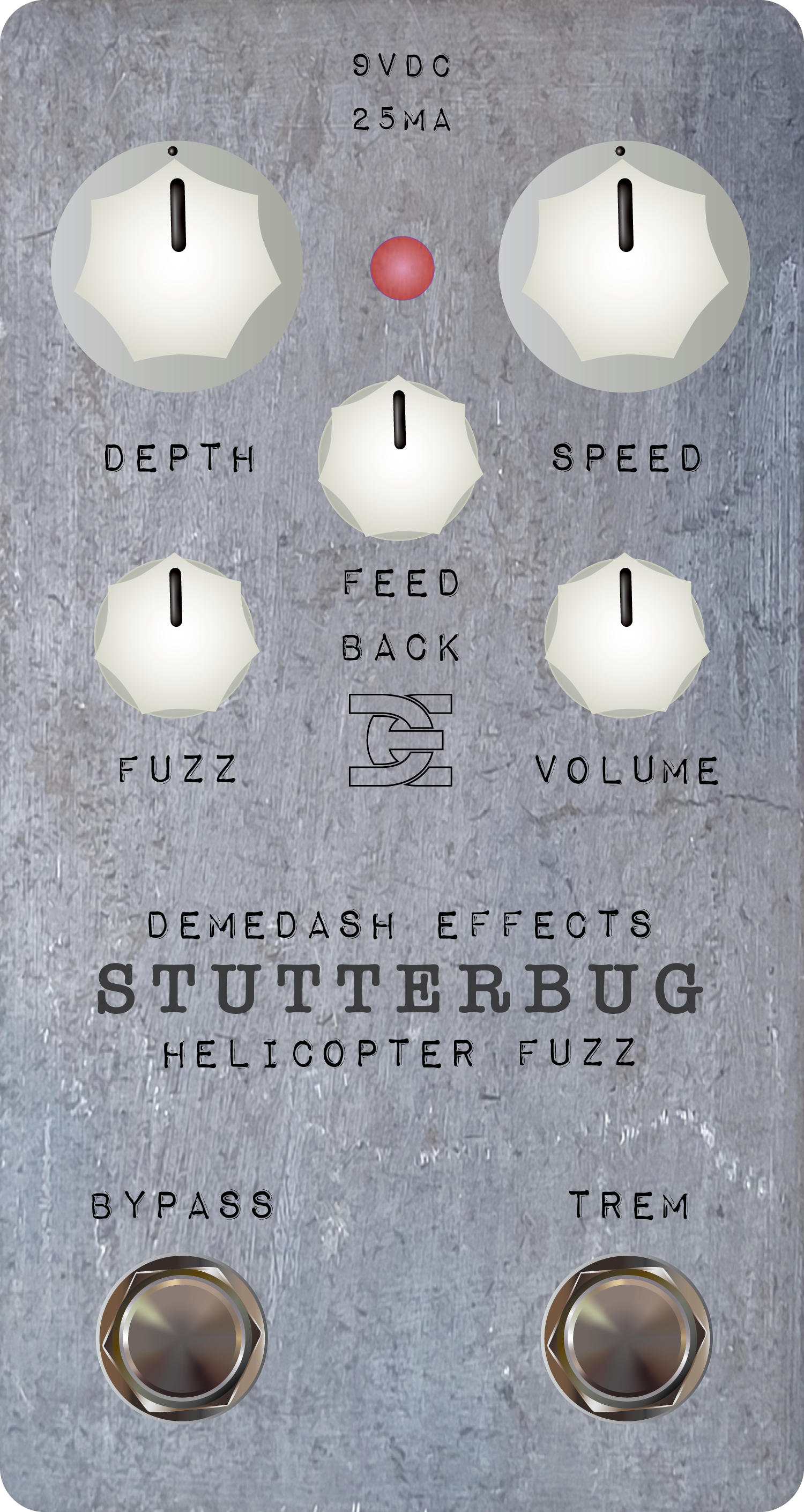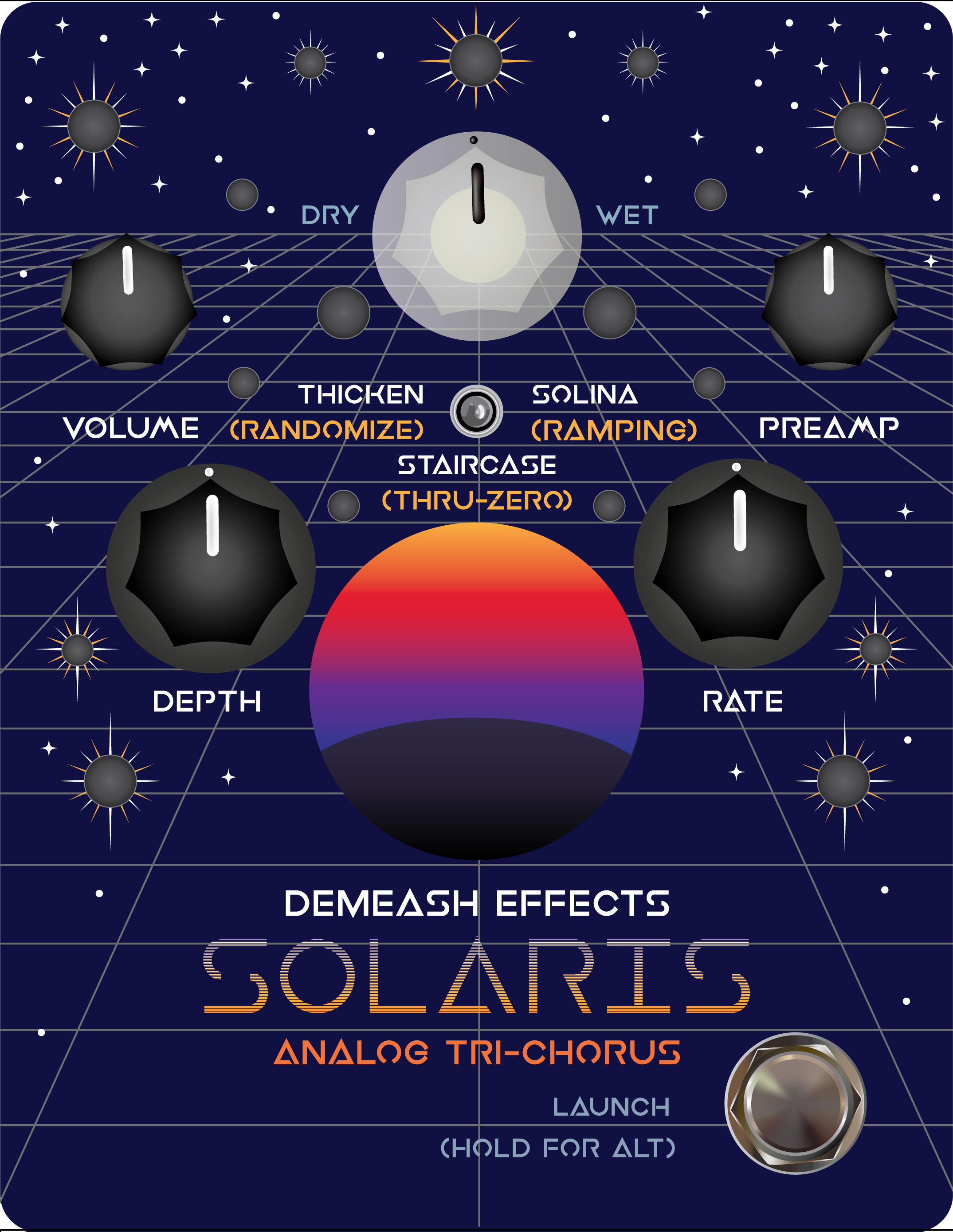made by hand, tuned by ear
built to order
Want to join the cool kids club?*
Submit a build request here to get your hands on a pedal!
*engage in capitalism
main product line:
T-120 videotape echo v2
The Sound of Nostalgia.
Equal parts instrument and effect. Bounce phrases off of the T-120 and hear them come back in unexpected ways. Twisted around, coloured with the sound of stretched tape, years of wear, crinkles, and dust.
You can plug in without reading another word and find fantastic sounds without any trouble. But if you dig in, you’ll find a lush and complex modulation suite at your fingertips.
$225 USD / $320 CAD
T-60 analog modulator
It’s a chorus, it’s a vibrato, it’s a sample & hold machine, it’s a randomized detuning engine.
It’s an analog modulator.
The T-60 is capable of an incredible number of things thanks to it’s meticulously crafted digital control & superb analog sound design centred around the same type of bucket brigade delay line as all the classics used.
$300 USD / $425 CAD
T-120 deluxe v2
The Final Word in Echo Degradation.
All the tape-worn goodness of the T-120 v2, beefed up with features to make this the ideal Lo-Fi performance tool or writing partner.
Momentarily Triggerable Self-Oscillation, Precise Tap Tempo, Stereo Outputs & the option to enable Echo Trails all give you the ultimate control over your sound.
And it’s all stuffed into a box the same size as the original.
$325 USD / $465 CAD
SPIDOLA germanium fuzz
As sweet & articulate as it is brutal.
Two entirely separate clipping sections sit side by side - germanium treble booster and silicon bass overdrive.
These two clipping circuits are hit full-force by a high-gain booster circuit, then mixed back together again to produce a sound at once both familiar and like no other.
$185 USD / $265 CAD
112+ preamp distortion mkII
Professional-grade audio treatment with wide-ranging capabilities. A low-passed clipping stage mixed with a high-passed clean boost creates an articulate sound no matter how hard it’s driven.
Clean boost, jangly grit, sharp mid-hump style drive, fat saturated distortion and so much more. An active 3-band EQ with +/-6dB boost/cut capability on each band lets you tailor the output to your taste.
Running from an internal boosted supply of 32 volts ensures that the only distortion heard is fully intentional, and that it can take as well as it can give, working incredibly well stacked on top of other drives.
$225 USD / $320 CAD
SIDEWINDER analog ramping preamp
A 4-knob amp-in-a-box style overdrive with ramping control over its four parameters.
Use the toggle switch below the four param knobs (drive, bass, treble, level) to assign ramping control to the LFO. Each one can be ramped up or down from the current knob position, or set to stay put.
LFO rate can be controlled by the rate knob, the tap tempo footswitch, by midi clock or by midi CC. Four waveshapes can be selected from.
Insert an expression pedal or 0-5V CV, and the LFO will stop, handing control over the ramped parameters over to the input device.
Fully MIDI controllable.
Demo Video
$275 USD / $390 CAD
fun things that probably won’t be around forever:
STUTTERBUG helicopter fuzz
A chaotic wall of fuzz with an adjustable, gated feedback loop.
A square wave tremolo that can can range in speed from plodding to ring modulation.
Hours of fun and an entire sound in a single box.
$225 USD / $320 CAD
SHATTERBOX wavefolding overdrive
A medium gain overdrive perfect for edge of breakup tones, but capable of heavy dirt.
A ‘Tilt’ tone control with massive range.
And a bias knob that will turn your tone into shattered metal shards.
$175 USD / $250 CAD
in development:
These pedals are currently being worked on but don’t have a set release date.
They are far more complex than any previous releases, and both because I’m a single-person company and because parts are rather hard to source at the moment, doing a full-scale rollout with 50-100 or more ready to go at once probably won’t be feasible.
As such, these will be made and sold in small batches, direct to customer, at least initially.
Stay tuned for more info, and subscribe to the waiting list for a specific design if you want to have first dibs when orders open.
THE RETRO HARMONIC analog polyrhythmic engine
The Retro Harmonic was first conceptualized in 2018 as the desire for a feature-rich harmonic tremolo that sounded great. My ambitions were far ahead of my capabilities at the time, and it has been shelved and resumed too many times to count since. But after years of research, trial and error and feature creep, we’re almost there.
To undersell it: it’s a fully analog signal path manipulated entirely via intelligent digital control. To truly get to the heart of it will take some doing though. After all, the Retro Harmonic may very well be the most advanced analog tremolo ever created (harmonic or otherwise).
10 Polyrhythmic settings allow you to run the bass and treble LFOs at separate but mathematically related tempos, generating rhythms all their own as they repeatedly diverge & come back into sync.
A suite of wave shapes is at your disposal, ranging from classic to experimental.
An incredibly deep ramping implementation allows automated variation of any combination of knobs from the top two rows. Set them to ramp upwards or downwards or to stay still.
Hold a footswitch down to stretch their values out to the extreme and hold them there, or spark off a bouncing ramp and let the settings drift back and forth as you play.
An expression pedal (or 0-5v control voltage) can be used in place of the ramp, to control the speed of the ramp, or as a stand-in for the internally generated LFO itself.
What’s more, there are no awkwardly placed switches or controls for configuring any of these settings. It’s all set directly from the main panel, and the LEDs provide visual feedback to help display what’s being set.
A full MIDI implementation includes CCs for every parameter (including secondary settings and ramp configuration), 20 preset slots accessible via PC messages, and MIDI clock sync capability.
The preamp circuit has a switchable clipping threshold that allows you to configure it as a clean boost or as a harmonically rich medium-gain overdrive. You can toggle it using MIDI or a secondary control, and can save the mode you prefer into a preset and automatically load it in a snap.
There are even three modes of operation. True Bypass, Tremolo, and Drive Mode. Drive Mode passes your signal through the pedal without applying modulation, and stores your Drive, Tone & Level settings completely separately from Tremolo mode, letting you switch between a clean tremolo sound and a hot drive, or a driven trem & clean boost with ease.
SOLARIS analog tri-chorus
Expected in 2025. Features subject to change.
Circuitry that’s faithful to the classic Solina String Ensemble’s Tri-Chorus section in the sections where it counts most, generating enveloping stereo outputs that put you in the center of the three wavering analog delay lines.
An expanded feature set with modern intelligent control system to enable the hardware to do things that just weren’t possible in the 70’s. A tiny digital brain generates the LFOs, allowing for seamless switching between an array of 6 different chorus modes, some classic and some completely unique to this pedal.
Newly minted designs for preamp, mixer & output amplifier stages, custom-tailored for the broader array of use cases presented by the guitar pedal format.
A boost/cut control lets you keep the input clean even with very hot signals. You can alternately generate some beautiful, lightly compressed grit by turning the preamp control up high and overloading the input stage, which has been set up provide some pleasant extra grit that adds a bit of harmonic sweetness.
A gorgeous, pedalboard-ready box that can output some of the most mesmerizing stereo effects you’ve ever heard.
Intelligent mono/stereo output routing ensures you won’t only get half the effect if running the pedal in mono. If only one output is connected (to the left/mono jack), then all three voices are routed there. If you plug two output jacks in, the voices split between them left, right & centre, providing an enormous spacial effect that could give any reverb a run for its money in terms of atmosphere.
Because the stereo effect is generated via voice routing, the stereo output is safe to use with anything that may collapse the signal to mono, and won’t cause the issues sometimes run into when generating stereo fields via phase inversion. This is the perfect pedal to use at the junction where your board expands from mono into stereo.
Here are some sound clips recorded from prototype units - use headphones to get the full stereo effect!











